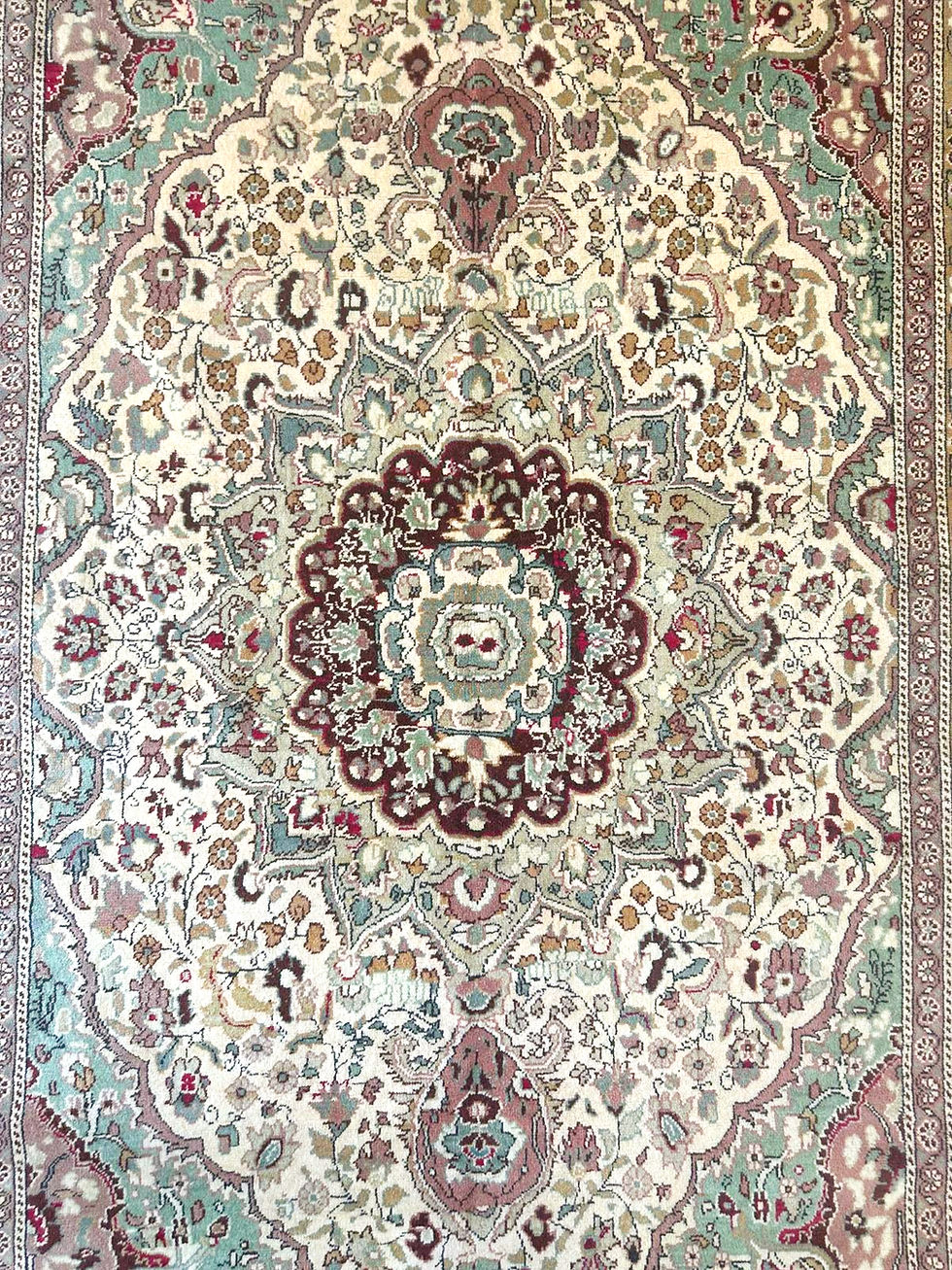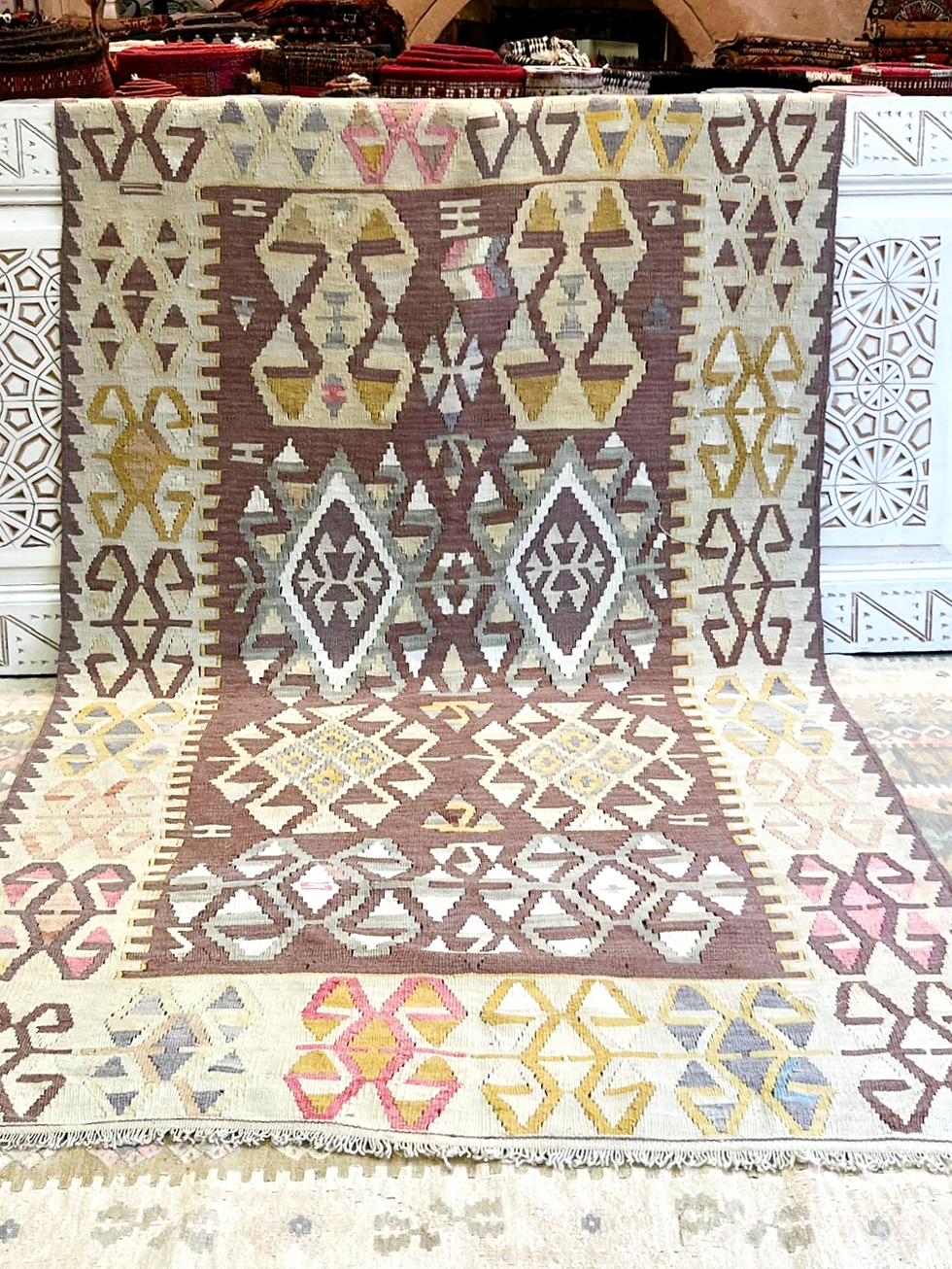Nomadic Konya Tulu Rug
- Size: 1.83 x.96m
- Age 40 yrs approx
- 100% mohair
Excellent condition ready to use
Price includes International shipping
Tulu rugs were predominately woven in nomadic villages in and around the high desert like plains that border the imposing Toros mountain range to the east of Konya in central Anatolia.Winters were harsh and summers hot so villagers moved to the mountains with their sheep and goats during the summer to avoid the extreme heat. Using traditional wooden looms they created dynamic sleeping rugs weaving luscious long strands of Mohair into a dense pile that not only provided a comfortable and warm bed, but were used as wall decorations, bed or sofa covers, and even as prayer rugs as well as being a practical deterrent for night insects who could be trapped in the dense pile. Tulu is the English pronunciation for the Turkish word, "tüylü" meaning hairy.
"Filikli" rugs are as variant of tulu rugs with even longer mohair piles and can consist of one or more individual panels that were woven and dyed separately and then stitched together.
"Filik" is the Turkish term used for the long locks of hair of kid mohair goats. A filikli weave is made up of warp and wefts and of tufting of 20 to 25 centimeter long bundles of mohair attached to the warps and wefts with Turkish double Gordes knots.As with tulu rugs, filikli rugs are used for wall decorations, bed or sofa covers, and even as prayer rugs.
Both styles of nomadic rug are also known as popular collectibles and textile art popular with ınterior designers. While some are striking because of their bright and lustrous colors, other examples are simply left in their natural tones or use simple geometric designs.























